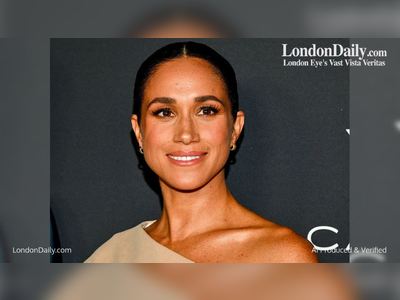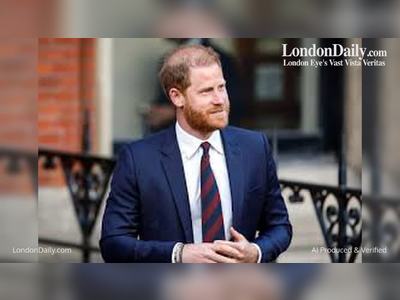
New norm: Film academy says movies will be required to meet at least 2 diversity standards to compete for best picture Oscar
"To encourage equitable representation on and off screen in order to better reflect the diversity of the movie-going audience," films will have to meet minimum requirements pertaining to representation and inclusion to be eligible for the best picture Oscar beginning with the 96th Oscar race (which will recognize achievements from 2024 and be held in 2025), the Academy of Motion Picture Arts and Sciences announced Tuesday.
In the meantime, an Academy Inclusion Standards form will have to be submitted to the Academy for a film to be considered for the 94th Oscars (recognizing films from 2021 released after Feb. 28) and 95th Oscars (recognizing films from 2021), although meeting inclusion thresholds will not yet be a requirement. And no action will be required for films wishing to compete for the 93rd Oscars, which are to be held on April 25.
The new requirements — which were announced just shy of the five-year anniversary of the #OscarsSoWhite controversy, and three months after the Academy announced its Academy Aperture 25 initiative — were determined by a task force headed by Academy governors DeVon Franklin and Jim Gianopulos and were modeled after a template inspired by the British Film Institute (BFI) Diversity Standards, which are used to determine certain funding eligibility in the UK and eligibility in some categories of the British Academy of Film and Television (BAFTA) Awards.
The Academy also consulted with the Producers Guild of America (PGA), as it presently does for Oscars eligibility.
"The aperture must widen to reflect our diverse global population in both the creation of motion pictures and in the audiences who connect with them," Academy president David Rubin and CEO Dawn Hudson said in a joint statement. "The Academy is committed to playing a vital role in helping make this a reality. We believe these inclusion standards will be a catalyst for long-lasting, essential change in our industry."
Starting with the 96th Oscars, a film will have to meet at least two of four of the following standards to be eligible for best picture.
STANDARD A: ON-SCREEN REPRESENTATION, THEMES AND NARRATIVES
To achieve Standard A, the film must meet ONE of the following criteria:
A1. Lead or significant supporting actors At least one of the lead actors or significant supporting actors is from an underrepresented racial or ethnic group.
Asian
Hispanic/Latinx
Black/African American
Indigenous/Native American/Alaskan Native
Middle Eastern/North African
Native Hawaiian or other Pacific Islander
Other underrepresented race or ethnicity
A2. General ensemble cast At least 30% of all actors in secondary and more minor roles are from at least two of the following underrepresented groups:
Women
Racial or ethnic group
LGBTQ+
People with cognitive or physical disabilities, or who are deaf or hard of hearing
A3. Main storyline/subject matter The main storyline(s), theme or narrative of the film is centered on an underrepresented group(s).
Women
Racial or ethnic group
LGBTQ+
People with cognitive or physical disabilities, or who are deaf or hard of hearing
STANDARD B: CREATIVE LEADERSHIP AND PROJECT TEAM
To achieve Standard B, the film must meet ONE of the criteria below:
B1. Creative leadership and department heads At least two of the following creative leadership positions and department heads — Casting Director, Cinematographer, Composer, Costume Designer, Director, Editor, Hairstylist, Makeup Artist, Producer, Production Designer, Set Decorator, Sound, VFX Supervisor, Writer — are from the following underrepresented groups:
Women
Racial or ethnic group
LGBTQ+
People with cognitive or physical disabilities, or who are deaf or hard of hearing
At least one of those positions must belong to the following underrepresented racial or ethnic group:
Asian
Hispanic/Latinx
Black/African American
Indigenous/Native American/Alaskan Native
Middle Eastern/North African
Native Hawaiian or other Pacific Islander
Other underrepresented race or ethnicity
B2. Other key roles At least six other crew/team and technical positions (excluding Production Assistants) are from an underrepresented racial or ethnic group. These positions include but are not limited to First AD, Gaffer, Script Supervisor, etc.
B3. Overall crew composition At least 30% of the film's crew is from the following underrepresented groups:
Women
Racial or ethnic group
LGBTQ+
People with cognitive or physical disabilities, or who are deaf or hard of hearing
STANDARD C: INDUSTRY ACCESS AND OPPORTUNITIES
To achieve Standard C, the film must meet BOTH criteria below:
C1. Paid apprenticeship and internship opportunities
The film’s distribution or financing company has paid apprenticeships or internships that are from the following underrepresented groups and satisfy the criteria below:
Women
Racial or ethnic group
LGBTQ+
People with cognitive or physical disabilities, or who are deaf or hard of hearing
The major studios/distributors are required to have substantive, ongoing paid apprenticeships/internships inclusive of underrepresented groups (must also include racial or ethnic groups) in most of the following departments: production/development, physical production, post-production, music, VFX, acquisitions, business affairs, distribution, marketing and publicity.
The mini-major or independent studios/distributors must have a minimum of two apprentices/interns from the above underrepresented groups (at least one from an underrepresented racial or ethnic group) in at least one of the following departments: production/development, physical production, post-production, music, VFX, acquisitions, business affairs, distribution, marketing and publicity.
C2. Training opportunities and skills development (crew) The film’s production, distribution and/or financing company offers training and/or work opportunities for below-the-line skill development to people from the following underrepresented groups:
Women
Racial or ethnic group
LGBTQ+
People with cognitive or physical disabilities, or who are deaf or hard of hearing
STANDARD D: AUDIENCE DEVELOPMENT
To achieve Standard D, the film must meet the criterion below:
D1. Representation in marketing, publicity, and distribution The studio and/or film company has multiple in-house senior executives from among the following underrepresented groups (must include individuals from underrepresented racial or ethnic groups) on their marketing, publicity, and/or distribution teams.
Women
Asian
Hispanic/Latinx
Black/African American
Indigenous/Native American/Alaskan Native
Middle Eastern/North African
Native Hawaiian or other Pacific Islander
Other underrepresented race or ethnicity
LGBTQ+
People with cognitive or physical disabilities, or who are deaf or hard of hearing
All categories other than Best Picture will be held to their current eligibility requirements.
Films in specialty categories submitted for Best Picture/General Entry consideration (e.g. Animated Feature, Documentary Feature and International Feature Film) will be addressed separately.










